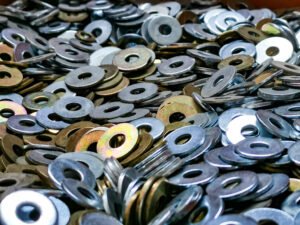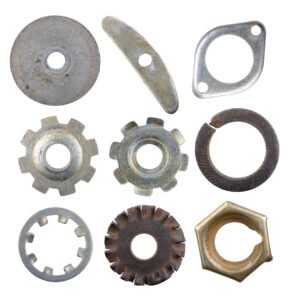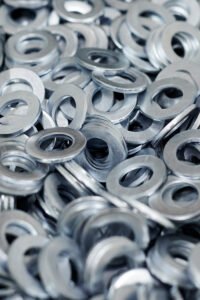Metal Punching Services
Metal punching services by CNV Engineering ensure precision and accuracy for your parts. We work with projects from simple to highly complex.
Metal punching is a prevalent process in metal fabrication, characterized by its method of material removal to achieve parts with specific shapes and features. In this process, a punch press propels a punch downward at high speed towards a die, creating holes, cutouts, embosses, and other desired features in the metal sheet.
To distinguish between metal punching and blanking, it’s important to note that in punching, the removed metal is considered scrap, whereas in blanking, the punched-out portion is the final desired part.
Metal punching isn’t limited to just cutting; it can also be used for forming. This includes creating embossed patterns, raised letters, and other decorative or functional elements on the metal sheet. Commonly used shapes like rectangles, circles, and ovals are easily achievable with standard tooling on any punch press. For more complex shapes, custom tooling may be required, with the cost-effectiveness depending on total volumes and materials used.
An essential aspect of the punching process is the die, which acts as a counterpart to the punch. Optimal punching quality is achieved by maintaining precise clearance between the die and the punch, ensuring clean cuts and accurate shapes in the finished part.
Gallery




When to Use Metal Punching?
Metal punching can be very cost-effective for batch production or series manufacturing. Here are a few questions to answer for determining if punching is the right fit for your needs.
First, how many parts are you looking to produce? The setup of a turret punch press can easily take 30 minutes, depending on the complexity of the job. If the volumes are small and the parts are flat, it’s entirely possible that the same job can be performed on a laser cutter in less time than it takes to even set up the turret punch, making it a much more cost-efficient alternative.
Second, does your project need custom punches and dies? Standard shapes like circles, ovals, and rectangles are available in many sizes. More complex shapes may require the manufacture of custom dies and punches first. Also, custom tooling needs may prolong the total delivery time by at least 2 weeks.
Third, what is the part size and thickness? The average CNC punch press works with medium-sized sheet metal (2500 x 1250 mm) and in the 0.5…4 mm thickness range for carbon steel, stainless steel and aluminum. Anything outside that scope might not be the best fit.
We would encourage talking to our engineers about your project needs to establish the best possible way to produce your parts.
What are the benefits of CNC Sheet Metal Punching
Sheet metal punching offers quite a few important benefits for metal fabrication, some of these are:
- Versatility: Sheet metal punching can be used to create a wide range of shapes and sizes, from simple round holes to complex cutouts and embossing enabled by custom tooling.
- Tight tolerances: CNC punch presses offer precise control over the punching process, resulting in high accuracy and repeatability.
- High speed: Metal punching process is fast and can produce many almost-identical parts quickly and efficiently.
- Cost-effective: For high-volume production runs, punching can be the cheapest option. The higher the volume, the lower the cost per part as it drives down the impact of setup costs (and custom tooling, if needed) on the total price.
- Minimal material waste: Sheet metal punching is a highly efficient process that produces minimal material waste compared to other cutting methods. The punched sheet metal can also be recycled, reducing environmental impact.
- Customisation: Punches and dies can be custom-made to produce complex shapes and features, allowing for the customisation of parts to meet specific design requirements.
- Consistency: Punching offers high consistency and uniformity across a production run, resulting in parts that fit together precisely and work as intended.
- No HAZ: Unlike thermal cutting methods like laser or plasma cutting, punching does not heat the metal. Thus, it is free of heat-affected zones.
Contact
+91- 90035 99554
sales@cnve.in
Schedule a Call
Capabilities
Free Resource

